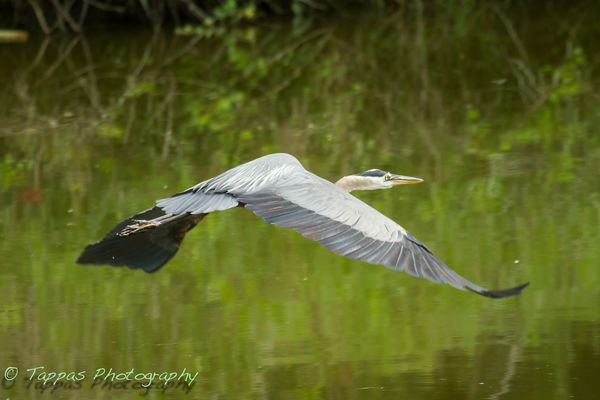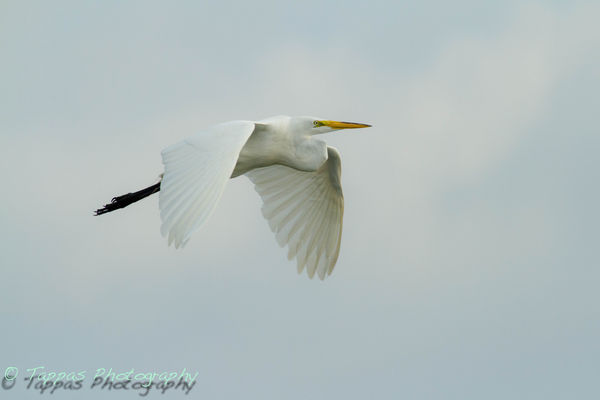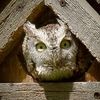Just a bit confused
May 28, 2013 07:56:49 #
oldmalky
Loc: West Midlands,England.
After reading the article by birdpix on what settings to use f8 and iso 800 (which is what i shall be using from now on)
my confusion arises from another forum where people advocate using manual all the time, I tried it once and all my pics turned out black i now realise why but what i would like to know is manual a viable alternative to priority A.
thank you mal.
my confusion arises from another forum where people advocate using manual all the time, I tried it once and all my pics turned out black i now realise why but what i would like to know is manual a viable alternative to priority A.
thank you mal.
May 28, 2013 11:08:23 #
oldmalky wrote:
Mal,After reading the article by birdpix on what settings to use f8 and iso 800 (which is what i shall be using from now on)
my confusion arises from another forum where people advocate using manual all the time, I tried it once and all my pics turned out black i now realise why but what i would like to know is manual a viable alternative to priority A.
thank you mal.
my confusion arises from another forum where people advocate using manual all the time, I tried it once and all my pics turned out black i now realise why but what i would like to know is manual a viable alternative to priority A.
thank you mal.
I believe you are referring to my article on shooting Birds in Flight. Of course manual is a viable alternative but you must be sensitive to changes in lighting conditions and adjust accordingly. That means that you are constantly checking your meter readings to see if things have changed. This can be a problem when light levels are frequently changing as in partly cloudy days when the sun is moving in and out of the clouds or if the bird is moving in and out of the shadows. Not many of us can keep up with all that and keep the bird focused and in the viewfinder.
Having said that, there are times when I purposefully use manual. When I have a clear sky and bright sun and I know that as long as the bird is in the sun my exposure value will not change, I use manual. This avoids the camera making inappropriate exposure adjustments should the bird fly in front of a dark background for example. This is especially true when shooting white birds since I have adjusted exposure to avoid blowing out my highlights.
May 28, 2013 11:44:02 #
Birdpix...I have a Canon T2i and I use a Canon 300mm f/4.0 L lens with a Canon 1.4 extender. If I try to use aperture priority I can set it at ISO 800...but can only choose f/5.6 or f/6.3...will either of these work? Most import to me is...will they work with Eagles in flight?
May 28, 2013 12:10:14 #
oldmalky
Loc: West Midlands,England.
Thank you very much that makes things clear,as i am new
to manual i think i will stick to aperture priority until i am
good enough to try other modes. My apologies for the double post i did try and erase it but failed.
to manual i think i will stick to aperture priority until i am
good enough to try other modes. My apologies for the double post i did try and erase it but failed.
May 28, 2013 22:50:56 #
Carolina Wings wrote:
The 300mm f/4 with the 1.4 Teleconverter is a good combination giving you effectively a 420mm f/5.6 lens. All of your apertures will be available to use except f/4. AF might be a tad slower but Eagles are big slow moving birds and are easy to track. I shouldn't say they are slow they just don't zig or zag a lot like smaller birds do so they are easier to keep in the viewfinder.Birdpix...I have a Canon T2i and I use a Canon 300mm f/4.0 L lens with a Canon 1.4 extender. If I try to use aperture priority I can set it at ISO 800...but can only choose f/5.6 or f/6.3...will either of these work? Most import to me is...will they work with Eagles in flight?
Jun 12, 2013 07:30:02 #
Has anyone tried using manual mode and auto ISO. It seems to work for me in those situations where the background light value changes as I'm panning with the bird. An example is when the subject crosses a gap in the forest background and flies into open sky. My f stop value stays where I want it and the ISO changes to accommodate the correct exposure. I know I may loose some shots due to high ISO values but most are usable with todays good cameras. Here are three samples using this technique.



Jun 12, 2013 09:35:42 #
oldmalky wrote:
Thank you very much that makes things clear,as i am new
to manual i think i will stick to aperture priority until i am
good enough to try other modes. My apologies for the double post i did try and erase it but failed.
to manual i think i will stick to aperture priority until i am
good enough to try other modes. My apologies for the double post i did try and erase it but failed.
While I think using aperture priority is a good idea you will never get "better" unless you frequently use manual. If you have a bird feeder nearby it is a great way to practice in manual. While my main interest is macro, the same basic camera learning curve applies.
Jun 12, 2013 10:07:35 #
Gary Truchelut wrote:
Has anyone tried using manual mode and auto ISO. It seems to work for me in those situations where the background light value changes as I'm panning with the bird. An example is when the subject crosses a gap in the forest background and flies into open sky. My f stop value stays where I want it and the ISO changes to accommodate the correct exposure. I know I may loose some shots due to high ISO values but most are usable with todays good cameras. Here are three samples using this technique.
Gary: Manual control of aperture and shutter speed with Auto ISO is a valuable and versatile tool to have in your bag of tricks. I use it frequently with my longer lenses where I feel it necessary to control both aperture for DOF and shutter speed for shake/movement reduction in an environment where the light values are frequently changing. You're right that the better high ISO response of the newer sensors makes this technique even more useful.
I disagree, to some extent, on your scenario of the bird flying from in front of dark foliage into the open sky and the camera being able to give appropriate exposure. How your meter reads the scene depends on the metering method that you are using. The meter's response will be different if you are using evaluative versus spot metering, for example. With evaluative metering as a bird moves from in front of a dark background to a light background the exposure value will change even if the light directly striking the bird does not. This is also influenced by how much of the viewfinder the bird takes up. With spot metering, as long as you accurately keep the spot on the bird, the meter will ignore the background and not change exposure.
My main use of this technique comes on partly cloudy days where the light value changes quickly. The other scenario would be where the birds are moving from in the shadows to the open sky. As long as the light on the subject and the background are approx equal, it will work well.
Inevitably, any auto mode can be fooled which is why I use manual exposure whenever light conditions are stable enough.
I look forward to your response!
Jun 12, 2013 19:44:38 #
I agree, I only use this method when lighting is changing quickly and yes it does make a difference what metering mode you're using. I normally use center weighted when shooting moving subjects especially if they are large and spot if they are smaller. I've tried both and have not found a huge difference in the results.
To change the subject a bit, what focus points do you find best for BIF. I have experimented with all the different settings and can't really find one that I prefer. I know the single point is best but it is hard when hand holding to keep that small spot on the bird. Do you have any suggestions?
To change the subject a bit, what focus points do you find best for BIF. I have experimented with all the different settings and can't really find one that I prefer. I know the single point is best but it is hard when hand holding to keep that small spot on the bird. Do you have any suggestions?
birdpix wrote:
Gary: Manual control of aperture and shutter speed... (show quote)
Jun 12, 2013 23:34:34 #
Gary Truchelut wrote:
I agree, I only use this method when lighting is c... (show quote)
Gary, I have two 7D's and I find that AF point expansion works pretty well. This is the one that allows the 4 adjacent AF points to assist the main AF point in maintaining focus. That way you don't have to keep just that little point on the bird. I have trouble with that, too.
Recently, I have been experimenting with using all 19 AF points in what I call manual select 19 point AF. When you are in AI-Servo AF (tracking focus) you can manually select one of the AF points to be the primary AF point that will start the tracking. Then, all 19 AF points are active and can assist with tracking the subject. I am still not sure if this is a better way to do it but it may help with those smaller birds that are harder to keep on target. This is a little known feature of the 7D and a few other Canon models. I know for a fact that the 5D II doesn't have it. You might want to try it and see what you think.
One other setting on the 7D that I have changed is C.Fn III-1 AI Servo tracking sensitivity which I have set to slow. This delays refocusing if your AF point wanders off the target briefly or if something suddenly comes between the lens and subject while panning with a BIF.
Jun 13, 2013 06:17:47 #
I have not tried all 19 points but will do that this morning and report back. I normally use the 5 central points with good results, most of the time. I also have the tracking sensitivity set to just above the slowest setting which works well for me.thanks for all your help.
birdpix wrote:
Gary, I have two 7D's and I find that AF point exp... (show quote)
Jun 13, 2013 18:41:50 #
The 5D Mark III has the 19 point feature. I use it from time to time, especially against a blue sky. The 1D Mark IV has it also.
If you want to reply, then register here. Registration is free and your account is created instantly, so you can post right away.




